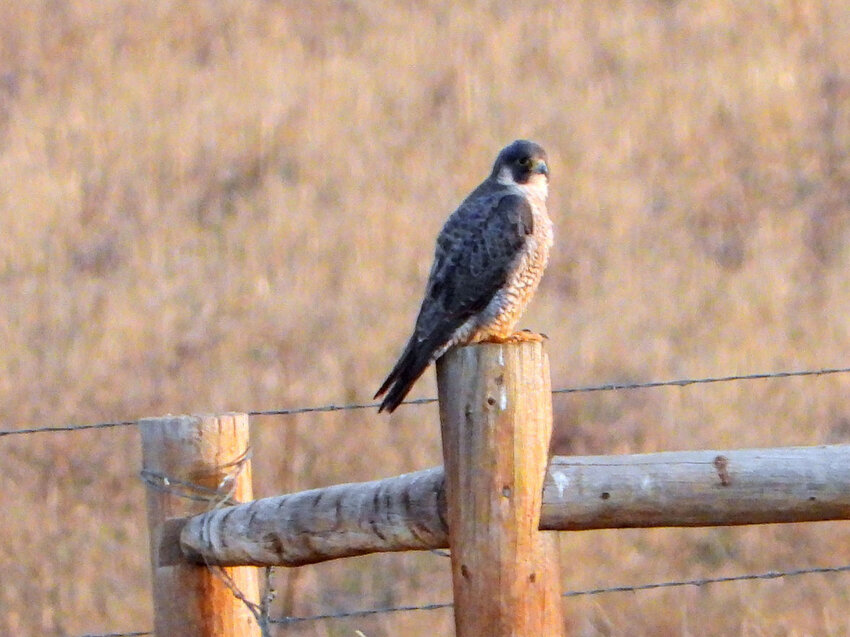
Photo courtesy Charles Martinez
This week’s Bird of the Week, compliments of the Weminuche Audubon Society and Audubon Rockies, is the peregrine falcon.
Two pieces of legislation have played a part in the protection of the ancient ruins found at Chimney Rock National Monument, and one of these was the Endangered Species Act passed by Congress in 1973. By that time, population numbers of peregrine falcons had plummeted worldwide. When a pair were found to be nesting on the spires of Chimney Rock in 1975, to protect these endangered birds, all plans to develop the area were put on hold.
A ban on the use of the pesticide DDT, which weakened their egg shells, and a captive breeding program which reintroduced thousands of peregrines into the wild were successful in saving this species from extinction. The peregrine was removed from the United States’ endangered species list in 1999.
Today, peregrine falcons can be found in almost any open habitat type as long as nesting sites are available. High, remote cliff ledges, bridges and nest boxes are all used. Large cities, with an abundance of pigeons and doves to hunt and tall buildings to nest on, are attractive breeding sites for peregrines.
An adult peregrine falcon has blue-gray upper parts and barring on the sides, belly and leg feathers. It has a black hood and dark sideburns. In flight, the wings appear pointed and long.
Peregrine falcons mostly eat other birds, from sandhill cranes to hummingbirds and all sizes in between. They glide in heights up to 1,000 feet above the ground and locate prey with their remarkable eyesight. Using a steep dive, they can achieve speeds in excess of 200 mph to catch their prey with outstretched talons. A pair acting together will also pursue prey in aerial chases.
This September marks the 10th anniversary of a second piece of legislation, this one granting Chimney Rock permanent protection as a national monument. Peregrine falcons continue to nest there.
For information on events, visit www.weminucheaudubon.org and www.facebook.com/weminucheaudubon/.